Monthly Vegetable Gardening Guide: Ultimate Planting and Care Strategies
- June 4, 2024
- 0 comment
Discover the ultimate monthly vegetable gardening guide. Master optimal planting and care strategies for thriving gardens all year round. Unlock the secrets to a bountiful vegetable garden with our comprehensive monthly guide.

Whether you’re a seasoned gardener or just starting out, our expert tips and strategies will ensure your garden flourishes in every season. Dive in and transform your gardening experience today!
List of Monthly Vegetable Gardening Guide
- January: Winter Preparation and Planning
- February: Early Plantings and Equipment Maintenance
- March: Transitioning to Spring
- April: Full-Scale Planting Begins
- May: Maximizing Growth
- June: Mid-Season Maintenance
- July: Peak Growing Season
- August: Preparing for Late Summer Harvests
- September: Fall Planting and Maintenance
- October: End of Season Care
- November: Winterizing Your Garden
- December: Reflection and Planning
Monthly Vegetable Gardening Guide
January: Winter Preparation and Planning
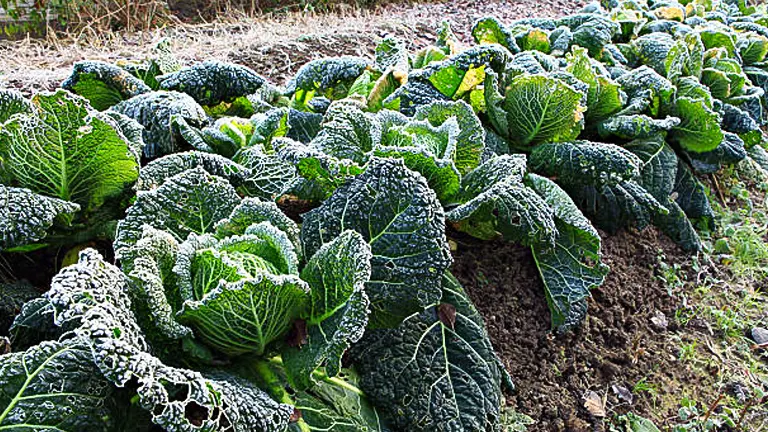
January, often characterized by its frosty mornings and barren landscapes, offers a vital period for thoughtful reflection and proactive planning in the gardening calendar. Start by analyzing your garden’s performance over the past year. Examine which crops thrived and which did not, and consider soil tests to check for nutrient deficiencies or pH imbalances. Scientific studies suggest that a soil pH between 6.0 and 7.0 is optimal for most vegetables, promoting nutrient availability and microbial activity, which can plummet in colder months.
- Indoor Seed Starting: Capitalize on the dormant period by beginning your seedlings indoors. Vegetables like kale, broccoli, and Brussels sprouts are particularly resilient and can be started 6-8 weeks before the anticipated last frost. Employ a growth medium with a balanced pH and incorporate a slow-release fertilizer with a nitrogen-phosphorus-potassium (N-P-K) ratio of approximately 10-10-10 to encourage robust initial growth. Set up grow lights to provide at least 300 micromoles of light per square meter per second, simulating the sun’s intensity on a clear day, which is crucial for preventing legginess in seedlings.
- Garden Layout Optimization: Using advanced garden planning tools or apps, overlay your garden dimensions with sun exposure maps, which can be generated from historical weather data. This planning helps in placing crops precisely where they will receive optimal sunlight, considering factors like shadow patterns from buildings or trees. Additionally, account for drainage patterns in your garden; areas with poor drainage can be modified with raised beds or by incorporating organic matter to enhance soil structure.
January Gardening Table
| Activity | Description | Scientific Insight | Recommended Action |
|---|---|---|---|
| Soil Testing | Assess nutrient levels and pH | Ideal pH for vegetable growth: 6.0-7.0 | Amend soil based on test results |
| Indoor Seed Starting | Start hardy vegetables indoors | Optimal light intensity: 300 μmol/m²/s | Use grow lights set to a 14-hour cycle |
| Garden Layout | Plan garden based on sunlight and drainage | Use historical sunlight data for placement accuracy | Implement layout changes for optimal growth |
February: Early Plantings and Equipment Maintenance

February can be a pivotal month in the gardening calendar, bridging the last of winter’s chill and the onset of spring’s warmth. During this month, indoor activities and equipment maintenance take precedence, setting the stage for a successful growing season.
- Advanced Seed Starting: As daylight gradually increases, continue to start seeds indoors based on your specific regional climate. For vegetables such as tomatoes, peppers, and eggplants that require a longer maturation period, consider employing biodegradable pots to minimize root disturbance during transplanting. Introduce a temperature-controlled environment ideally between 18-22°C (65-72°F) which is optimal for seed germination. Employ a seedling heat mat to maintain consistent soil temperature, boosting germination rates by up to 20%.
- Strategic Equipment Maintenance: February is also the ideal time for comprehensive equipment maintenance. Use this quieter period to deep-clean and repair all gardening tools. Calibrate garden sprayers and drip irrigation systems to ensure accurate application of water and plant nutrients, which is crucial for preventing over or under-watering once planting commences. A well-maintained tool can see efficiency improvements of up to 25%, reducing the physical effort and time required for garden tasks.
- Innovative Moisture Management: Check and upgrade watering systems to include automated moisture sensors. These devices can adjust watering schedules based on real-time soil moisture levels, which is particularly useful as unpredictable spring weather approaches. Implementing such technology can reduce water usage by up to 30% and ensure optimal soil moisture for plant health.
February Gardening Table
| Activity | Description | Technological Insight | Recommended Action |
|---|---|---|---|
| Advanced Seed Starting | Start sensitive vegetables in controlled settings | Optimal germination temperature: 18-22°C | Use heat mats and biodegradable pots |
| Equipment Maintenance | Calibrate and repair tools and systems | Efficiency improvement potential: Up to 25% | Calibrate sprayers and repair tools |
| Moisture Management | Implement automated moisture sensors in watering systems | Potential water savings: Up to 30% | Install moisture sensors and adjust irrigation setups |
March: Transitioning to Spring

March marks a significant turning point in the gardening calendar, as the chill of winter begins to lift and signs of spring emerge. This month is critical for setting the foundation for a successful growing season.
- Advanced Soil Preparation: As the soil thaws, it’s crucial to prepare it meticulously. Begin by removing any plant residues from the previous season, which can harbor pests and diseases. Conduct a comprehensive soil test to measure levels of key nutrients such as nitrogen (N), phosphorus (P), and potassium (K), as well as soil pH. Most vegetables thrive in soil with a pH between 6.0 and 7.0. Enhance soil fertility and structure by incorporating organic matter—compost or well-rotted manure can increase the soil’s organic content by up to 5%, significantly improving water retention and nutrient availability.
- Early Planting Strategies: Start with cold-hardy vegetables like peas, spinach, and lettuce. These crops can germinate in soil temperatures as low as 5°C (41°F), but optimal growth occurs when the soil reaches at least 10°C (50°F). Employ soil warming techniques such as using black plastic mulch to raise soil temperature by up to 3-5°C, speeding up germination and early growth.
- Frost Protection Measures: Protect early plantings from late frosts, which can unexpectedly damage young plants. Utilize floating row covers or cold frames, which can offer 2-4°C of additional warmth to the plants, extending the growing season by 2-3 weeks. These covers also help in moderating moisture levels and protecting against wind and pests.
March Gardening Table
| Activity | Specific Task | Technological Innovation | Impact & Benefit |
|---|---|---|---|
| Soil Nutrient Enhancement | Apply nitrogen-rich amendments | Utilize controlled-release fertilizers | Optimizes nutrient uptake, reduces leaching |
| Soil Temperature Management | Employ black plastic mulch | Integrate infrared-transmitting (IRT) mulch | Accelerates warming by up to 20%, boosts early growth |
| Precision Frost Protection | Install automated frost protection systems | Use automated rolling row covers with temperature sensors | Provides dynamic protection, reduces manual labor |
April: Full-Scale Planting Begins

April marks a critical transition in the gardening calendar when the threat of frost typically wanes and conditions become favorable for planting a broader variety of vegetables. This month is pivotal for establishing the groundwork for mid to late-season harvests.
- Optimal Planting Strategies: This is the prime time to plant root crops like carrots and beets, which thrive in the still-cool soil temperatures of early spring. Cool-season crops such as lettuce, kale, and Swiss chard also benefit from April plantings, taking advantage of the mild weather to establish a strong root system before the heat of summer. For warmth-loving plants like tomatoes, peppers, and eggplants, ensure that the soil temperature is consistently above 60°F (15°C). Using soil temperature data loggers can help accurately monitor conditions to optimize planting times.
- Advanced Watering Techniques: As temperatures increase, plants require more water. Initiate a deep watering regimen to encourage deeper root systems, which are crucial for drought resistance and nutrient uptake. Consider implementing a drip irrigation system, which can reduce water usage by up to 30% while ensuring that water reaches the plant roots more effectively.
- Precision Fertilization: Begin fertilizing with a balanced N-P-K (Nitrogen-Phosphorus-Potassium) fertilizer. Tailor the fertilizer composition based on soil tests conducted earlier in the season. Employ slow-release fertilizers to provide a steady supply of nutrients over time, reducing the risk of overstimulation and nutrient runoff, which can be particularly harmful to the environment.
April Gardening Table
| Task | Description | Technological Innovation | Expected Outcome |
|---|---|---|---|
| Targeted Crop Planting | Planting root and cool-season vegetables | Utilize soil temperature data loggers | Ensures optimal growth conditions and timing |
| Advanced Watering | Initiate deep watering regimen | Implement drip irrigation systems | Reduces water use by 30%, improves root health |
| Precision Fertilization | Apply slow-release balanced fertilizers | Use soil nutrient sensors for tailored application | Promotes sustainable growth, minimizes runoff |
May: Maximizing Growth

May serves as a critical juncture in the gardening calendar, with increasing temperatures and lengthening days that drive vigorous plant growth. Effective management during this period is crucial for ensuring plant health and maximizing yield.
- Advanced Pest Control Techniques: Vigilant monitoring and early detection of pests are essential for preventing infestations that can devastate a garden. Incorporate IPM (Integrated Pest Management), which includes biological control, habitat manipulation, and the use of resistant varieties. Use pheromone traps and insect exclusion screens to detect and reduce pest populations without chemical intervention. Employ neem oil and insecticidal soap as part of a broader strategy, applying these treatments in the early morning or late evening to minimize impact on beneficial insects.
- Disease Prevention: Implement proactive disease management by rotating crops to different plots annually to prevent soil-borne diseases. Enhance air circulation around your plants by proper spacing and pruning, which is crucial for reducing fungal and bacterial disease pressure. Use drip irrigation systems to deliver water directly to the roots, minimizing leaf wetness, a common precursor to many plant diseases.
- Optimal Mulching and Spacing: Apply a layer of organic mulch, such as shredded bark or straw, approximately 2-3 inches thick, to conserve moisture, regulate soil temperature, and suppress weed growth. Design your planting layout to ensure adequate space between plants; this varies by species but generally ranges from 12 to 24 inches for most vegetables. This spacing allows for optimal air flow and light penetration, which are critical for healthy growth and disease prevention.
May Gardening Table
| Aspect | Strategy | Technological Application | Impact & Benefit |
|---|---|---|---|
| Pest Control | Integrated Pest Management (IPM) | Use of pheromone traps and exclusion screens | Reduces pest populations sustainably |
| Disease Prevention | Crop rotation and pruning | Implement drip irrigation systems | Minimizes moisture on foliage, reducing disease risk |
| Mulching and Plant Spacing | Organic mulching and optimal layout | Use soil moisture sensors to guide watering | Enhances moisture retention, reduces thermal stress |
June: Mid-Season Maintenance

As summer arrives, the demands on your garden escalate. June is pivotal for reinforcing the health of your plants and ensuring robust growth and productivity during the peak of the growing season.
- Precision Fertilizing Techniques: By mid-season, nutrient reserves in the soil may start to deplete, particularly for high-demand crops like tomatoes and corn. Apply a specialized fertilizer mix designed to support flowering and fruiting—look for a formulation with reduced nitrogen and enhanced phosphorus and potassium levels (e.g., 5-10-10 NPK ratio). Utilize soil testing kits to precisely tailor your fertilization strategy based on the specific nutrient status of your soil. This ensures that you’re not just feeding the plants, but also amending the soil nutrient profile efficiently.
- Structural Support for Plants: For vining and climbing plants such as cucumbers, peas, and beans, using trellises or stakes is crucial. These support structures not only optimize space within the garden but also enhance the health of your plants by improving air circulation and reducing susceptibility to fungal diseases. Consider adjustable or modular trellis systems that can be expanded or reconfigured as plants grow.
- Advanced Water Management: With rising temperatures, maintaining optimal moisture levels becomes critical. Implement a drip irrigation system, which delivers water directly to the soil near plant roots, minimizing evaporation and runoff. Integrate a smart irrigation controller that uses real-time weather data to adjust watering schedules automatically, ensuring efficient water use while preventing overwatering and water stress.
June Gardening Table
| Aspect | Strategy | Technological Innovation | Expected Benefit |
|---|---|---|---|
| Fertilizing | Tailored nutrient application | Soil testing kits, targeted NPK formulation | Optimizes plant nutrition, enhances fruiting |
| Plant Support | Use of modular trellis systems | Adjustable, expandable trellis designs | Improves plant health, maximizes garden space |
| Water Management | Smart irrigation systems | Real-time weather-based irrigation control | Reduces water use, ensures optimal plant hydration |
July: Peak Growing Season

July is a pivotal month in the gardening calendar, with many crops reaching maturity and new planting opportunities arising. This phase requires diligent management to sustain plant health and productivity.
- Optimized Harvesting Techniques: During this peak season, it’s crucial to harvest vegetables like peas, lettuce, radishes, and early potatoes at their optimal maturity. This not only ensures the best flavor and nutritional quality but also stimulates the plants to continue producing. For instance, frequent harvesting of lettuce can extend its productivity by weeks. Use a refractometer to measure the brix (sugar content) of your fruits and vegetables to determine the best time for harvesting, enhancing both taste and health benefits.
- Advanced Succession Planting: To maintain a continuous supply of produce, utilize succession planting strategies. After harvesting early crops, immediately replant with species that thrive in the warm mid-summer climate, such as spinach, radishes, and leaf lettuce. Integrate soil temperature sensors to ensure the replanted crops are sown into ideal conditions, potentially increasing germination rates and overall crop yield.
- Scientific Pest and Disease Monitoring: With the increase in temperature and plant density, pests and diseases can become more prevalent. Implement a systematic approach to monitoring, using sticky traps and pheromone lures to detect early infestations. Employ environmentally friendly pest control methods such as biological control agents (e.g., ladybugs for aphid management) and botanical pesticides like pyrethrin, derived from chrysanthemum flowers, which are effective yet gentle on the ecosystem.
July Gardening Table
| Aspect | Strategy | Technological Tool | Benefit |
|---|---|---|---|
| Optimized Harvesting | Brix measurement for peak harvest | Refractometer | Ensures optimal taste and nutritional content |
| Advanced Succession Planting | Temperature-based sowing times | Soil temperature sensors | Increases germination rate and crop consistency |
| Pest and Disease Monitoring | Early detection and eco-friendly control | Sticky traps, pheromone lures, biological agents | Reduces chemical use, enhances plant health |
August: Preparing for Late Summer Harvests
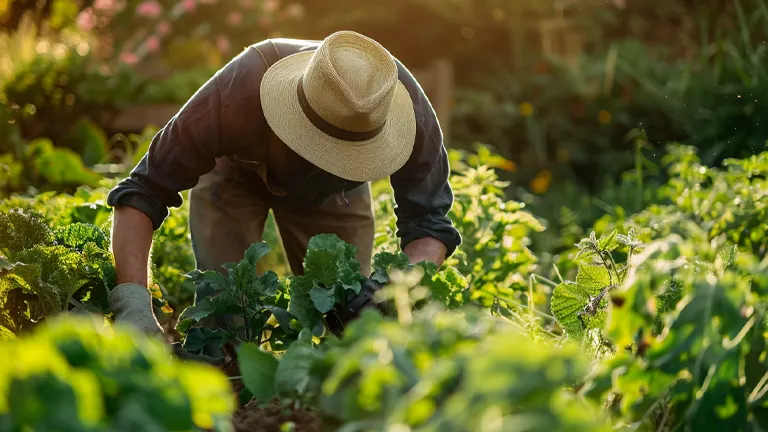
August challenges gardeners with its intense heat, which can stress plants but also spur rapid growth and maturation of many crops. Effective management strategies during this time are crucial for ensuring the health of the garden and the quality of the harvest.
- Advanced Water Stress Management: In August, maintaining optimal soil moisture is critical to prevent stress during peak heat periods. Employ soil moisture sensors to monitor real-time moisture levels, allowing for precise watering that meets plants’ needs without overwatering. Implementing a mulching strategy with organic materials such as straw or shredded bark can reduce soil temperature by up to 10°F and decrease evaporation by up to 50%, significantly enhancing water retention.
- Optimizing Harvest Timing: Monitor the ripeness of vegetables such as tomatoes, cucumbers, and peppers using a colorimeter to measure color changes, which are reliable indicators of peak ripeness and nutritional content. This method ensures that each fruit is harvested at its optimal point for flavor and health benefits.
- Preservation and Storage Techniques: As you harvest, begin processing surplus produce for storage to extend the availability of your garden’s bounty. Techniques such as blanching vegetables before freezing can preserve nutritional quality and texture. For canning, adjust acidity as needed to prevent bacterial growth, ensuring safety and extending shelf life. Explore dehydration methods with precise temperature control to maintain the flavor and nutritional integrity of dried goods.
August Gardening Table
| Aspect | Technique | Tool or Method | Impact & Benefit |
|---|---|---|---|
| Water Stress Management | Precision irrigation | Soil moisture sensors | Optimizes water use, ensures plant health |
| Optimizing Harvest Timing | Color-based ripeness detection | Colorimeter | Maximizes flavor and nutritional value of harvests |
| Preservation and Storage | Nutrient-preserving processing | Blanching, acidity adjustment, precise dehydration | Extends usability, maintains quality and safety |
September: Fall Planting and Maintenance
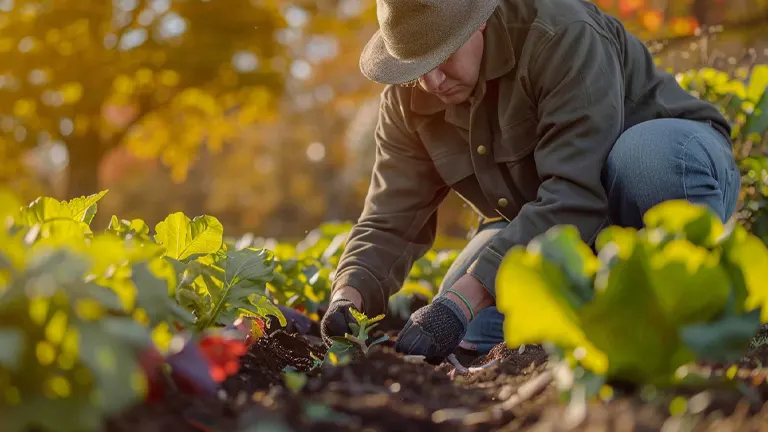
September marks a transitional period in the gardening calendar, with cooler temperatures making it ideal for planting certain crops and preparing the garden for winter.
- Strategic Fall Planting: Focus on planting cold-hardy vegetables that thrive in cooler weather and can withstand light frosts. These include kale, turnips, Brussels sprouts, and radishes. Employ a soil thermometer to ensure the ground has cooled adequately before planting, typically below 60°F (15°C) but not too cold, to encourage seed germination. Consider the use of cold frames or row covers to extend the growing season.
- Advanced Garden Preparation for Winter: Begin garden clean-up by removing spent plant material and any debris to reduce the risk of pests and diseases overwintering in the soil. This is also an optimal time to test soil nutrients and pH levels, allowing you to amend the soil appropriately with compost or other organic matter to replenish nutrients depleted during the growing season. Cutting back perennials and dividing overgrown plants helps to maintain plant health and vigor.
- Erosion Control and Soil Protection: Apply a layer of organic mulch or establish a cover crop, such as winter rye or clover, which will protect the soil from erosion and improve soil structure and fertility through the addition of organic matter when tilled into the soil in spring.
September Gardening Table
| Task | Implementation Strategy | Tools/Methods | Benefits |
|---|---|---|---|
| Fall Planting | Planting temperature-sensitive crops | Soil thermometer, cold frames | Ensures optimal germination, extends growing season |
| Garden Winter Preparation | Soil testing and amendment | Soil test kits, organic compost | Enhances soil fertility, prepares for next season |
| Soil Protection | Installation of erosion control measures | Mulching, cover crops | Prevents soil erosion, improves soil health |
October: End of Season Care

As October ushers in cooler temperatures, gardeners must take proactive steps to ensure their garden beds are well-prepared for winter, optimizing the conditions for next year’s growth.
- Efficient Harvesting of Late-Season Crops: Focus on harvesting storage crops such as pumpkins, squash, and late potatoes. Utilize a refractometer to measure sugar content in pumpkins and squash, ensuring they are harvested at peak sweetness and flavor, which also correlates with better storage longevity. Store these crops in a controlled environment where humidity and temperature can be maintained at optimal levels for preservation—typically around 50-55°F with 60-75% humidity.
- Thorough Garden Cleanup: Conduct a thorough cleanup of garden beds by removing all spent annuals and any plant debris. This reduces the habitat for pests and diseases over the winter. Employ tools like ergonomic rakes and leaf blowers to efficiently clear debris without causing strain or damage to soil structure.
- Advanced Soil Care: Post-cleanup, conduct a detailed soil analysis using a soil test kit to determine the specific nutrient deficiencies and pH level. Based on the results, amend the soil with targeted organic matter such as bone meal for phosphorus, green sand for potassium, or sulfur to lower pH. Apply a final layer of organic mulch, such as shredded leaves or straw, which will decompose over the winter, enhancing soil fertility and structure. Consider planting cover crops like winter rye or hairy vetch, which fix nitrogen in the soil, improve soil structure, and prevent erosion.
October Gardening Table
| Activity | Strategy | Tools/Methods | Scientific Benefit |
|---|---|---|---|
| Harvesting Late-Season Crops | Sugar content analysis for optimal harvest | Refractometer | Ensures optimal flavor and storage conditions |
| Garden Cleanup | Efficient debris removal | Ergonomic rakes, leaf blowers | Minimizes pest and disease risk |
| Soil Care | Soil amendment based on scientific analysis | Soil test kits, specific amendments | Tailors nutrient replenishment, improves soil health |
November: Winterizing Your Garden
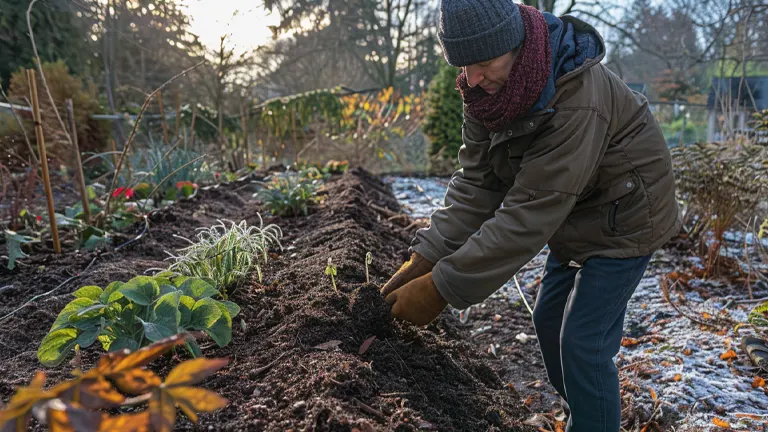
November marks a crucial transition into the garden’s dormant period, requiring focused efforts to protect the garden from impending winter conditions and ensure a productive return in the spring.
- Advanced Perennial and Soil Protection: When protecting perennials and the soil from freezing temperatures, apply a thick layer of organic mulch, such as straw or shredded leaves, around the base of the plants. This mulch acts as an insulation layer, maintaining a more consistent soil temperature and preventing freeze-thaw cycles that can damage plant roots. Additionally, consider using geotextiles or garden blankets for added protection against extreme cold snaps, which can offer temperature moderation of up to 10°F.
- Optimized Cover Crop Strategy: Sowing cover crops such as clover, winter rye, or hairy vetch can significantly improve soil health over the winter months. These crops are not only excellent for preventing erosion but also for fixing nitrogen in the case of legumes, and increasing organic matter content in the soil. Use a seed drill for even distribution and optimal soil contact, which can enhance germination rates and growth efficiency.
- Comprehensive Equipment and Tool Maintenance: End-of-season tool care involves more than just cleaning—implement a thorough maintenance routine including inspecting for wear and damage, replacing faulty parts, and applying a light coating of oil to all metal surfaces to prevent rust. Store tools in a dry, organized environment to avoid moisture buildup and ensure easy accessibility come spring.
November Gardening Table
| Task | Technique | Tools/Methods | Benefits |
|---|---|---|---|
| Perennial and Soil Protection | Insulate with organic mulch and geotextiles | Straw, shredded leaves, garden blankets | Protects roots, stabilizes soil temperature |
| Cover Crop Planting | Sow legumes and grasses for soil enhancement | Seed drill, winter rye, clover | Fixes nitrogen, increases organic matter, prevents erosion |
| Tool and Equipment Maintenance | Detailed cleaning, repair, and storage | Rust-preventative oils, storage solutions | Extends tool life, ensures spring readiness |
December: Reflection and Planning

December, with its slower garden activities, provides an ideal time for comprehensive reflection on the past year’s gardening efforts and strategic planning for the future.
- In-depth Review of the Year’s Performance: Conduct a systematic review of your garden’s annual performance. Utilize a garden journal if available, or start one, noting down details like plant varieties, planting dates, yield rates, pest attacks, and weather challenges. Analyze this data to identify trends or patterns that could inform future gardening practices. For instance, note which plant varieties thrived despite adverse weather conditions or pest pressures, and consider these for replanting.
- Strategic Planning for the Next Season: Based on your review, plan for the upcoming year. Use a garden planning software or app that allows you to visualize crop rotations and plant spacing, helping to maximize sunlight exposure and air circulation, thus reducing the risk of disease. Pre-order seeds and supplies to ensure availability, focusing on high-demand or rare varieties.
- Commitment to Continuing Education: Enhance your gardening knowledge by engaging in educational opportunities during the off-season. Subscribe to gardening magazines, enroll in online courses that offer the latest in agricultural science, or participate in webinars and workshops focusing on sustainable gardening practices and advanced horticultural techniques.
December Gardening Table
| Activity | Description | Tools/Methods | Benefits |
|---|---|---|---|
| Yearly Performance Review | Analyze plant performance and challenges | Garden journal, data analysis tools | Identifies successful practices and areas for improvement |
| Strategic Seasonal Planning | Plan crop rotations and order seeds | Garden planning software, seed catalogs | Optimizes garden layout and resource use |
| Continuing Education | Enhance horticultural knowledge | Online courses, workshops, magazines | Keeps skills up-to-date, introduces new techniques |
General Care Tips Across the Months
While specific activities change with the seasons, some gardening tasks remain constant throughout the year. Here are general care tips that apply no matter the month:
Regular Maintenance: Regular weeding is crucial. Weeds compete with vegetables for nutrients, water, and light. Keeping your garden beds clear of weeds not only improves the aesthetic but also the health of your plants.
Monitoring for Pests: Always be vigilant about pests. Early detection can prevent widespread damage. Use environmentally friendly pest control methods where possible, such as introducing beneficial insects, using barriers, or applying organic pesticides.
Water Management: Proper watering is vital. Vegetables typically require about an inch of water per week, more if the weather is particularly hot and dry. Water deeply and infrequently to encourage deep root growth. In wet climates, ensure good drainage to prevent root rot.
Fertilization: Regular feeding tailored to the growth stage of your plants supports healthy development. A balanced fertilizer at the beginning of the season gives a good start, but tailor your approach based on specific plant needs and soil conditions as the season progresses.
Related Post
- How to Build a Barn: A Step-by-Step Guide for Beginners
- How to Build a Sustainable Compost Bin: Easy and Eco-Friendly DIY
- How to Fertilize Bougainvillea: A Complete Guide for Stunning Blooms
- How to Fertilize Apple Trees: Essential Tips for a Bountiful Harvest
- How to Fertilize Lemon Trees: Secrets for Thriving Citrus
- How to Fertilize Avocado Tree: A Step-by-Step Guide for Lush Growth
- 10 Best Bow Saws to Buy in 2024: Top Picks for the Money
- Best Miter Saw For Beginners
- Top 10 Pruning Saws to Buy in 2024: Best for the Money
- 7 Best Pocket Chainsaw
Conclusion
This monthly vegetable gardening guide offers a structured approach to managing a productive garden throughout the year. By following these detailed month-by-month strategies, gardeners can optimize their efforts for the best yields and healthiest plants. Whether you are a novice seeking guidance or an experienced gardener refining your practices, this guide serves as a valuable resource for achieving gardening success.
As you move through each month, adapt the recommendations based on local weather conditions and specific crop needs. Gardening is not just a science but also an art, requiring observation, adaptation, and a deep connection with the natural world. Embrace these challenges and enjoy the rewards of your labor as seasons change.
FAQs
- What vegetables should I start indoors and when?
Begin with cool-season crops like broccoli, cabbage, and kale about 6-8 weeks before the last expected frost. Tomatoes, peppers, and eggplants should also be started indoors 6-8 weeks before the last frost due to their longer growing season. - How can I protect my early spring plantings from unexpected frosts?
Use floating row covers or cold frames to protect young plants from frost. These provide a barrier against cold air and can be easily removed as temperatures stabilize. - When is the best time to apply mulch to my vegetable garden?
Apply mulch in late spring after the soil has warmed. Mulching too early can slow the warming process, which is vital for growth. A second layer can be added in mid-summer to retain moisture and suppress weeds. - What are the best crops for succession planting, and how do I schedule them?
Quick-maturing vegetables like radishes, lettuce, and spinach are ideal for succession planting. Schedule plantings 2-3 weeks apart to ensure a continuous harvest throughout the growing season. - How do I manage watering during the peak summer months?
Water deeply in the early morning to reduce evaporation and ensure that water reaches deeper into the soil. Consider a drip irrigation system for consistent, efficient watering directly at the roots. - What should I do in my garden to prepare for the fall season?
Plant cold-hardy vegetables like brussels sprouts, carrots, and kale for a fall harvest. Begin to clear out spent summer crops and replenish the soil with compost or other organic matter. - How can I effectively store my harvested vegetables for winter?
Store root vegetables like carrots and beets in cool, humid conditions such as a root cellar. For crops like onions and garlic, cure them in a dry, well-ventilated area before storing in a cool, dry place. - What are some important end-of-season tasks to ensure my garden is ready for next year?
Clean and store gardening tools, remove all plant debris from the garden beds to reduce disease risks, and test the soil to determine if any amendments are needed before the next planting season.
With the Monthly Vegetable Gardening Guide, you’re set for success through all seasons. Use this guide to nurture a vibrant and productive garden year-round. Happy gardening!

Kristine Moore
Forestry AuthorI'm Kristine Moore, a seasoned garden landscaping professional with over 30 years of experience. My extensive career has been dedicated to transforming outdoor spaces into stunning, sustainable landscapes. With a deep understanding of horticulture, design principles, and environmental stewardship, I have become a respected figure in the field, known for creating harmonious, visually appealing, and eco-friendly gardens. My commitment to excellence and continuous learning in landscaping trends and techniques has solidified my reputation as an expert in garden design and implementation.











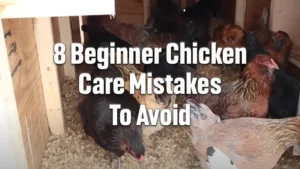

Leave your comment